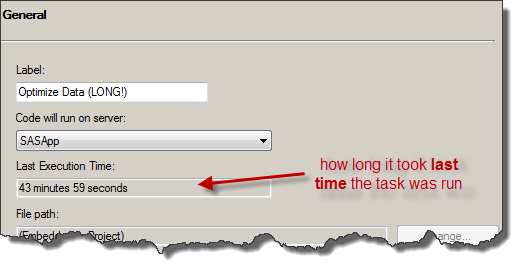All Posts

If you missed PharmaSUG - as I did - you still like to stay on top of the great information that comes out of the conference. I found the list of Best Contributed Papers and decided to post them here for you. There is a lot of other great information

If you're looking for some good stuff to read ... I mean great stuff for SAS users, I've had this list brewing in my head for a few weeks now. (The reason that I ask is because in the US, this weekend will be a three-day holiday to commemorate Memorial Day. So, many families will
In a previous blog, I showed how to use SAS/IML subscript reduction operators to compute the location of the maximum values for each row of a matrix. The subscript reduction operators are useful for computing simple statistics for each row (or column) of a numerical matrix. If x is a

On the SAS-L mailing list, a participant posed this question (paraphrased): How can I tell which date format my Windows session is using: European format (with day first) versus USA format (with month first)? I'm reading in output from a Windows file listing, and need to know how to interpret

In August 2011, we expanded the scope of the SAS Global Forum blog and rebranded it as the SAS Users Group blog. Our goal was to create one vibrant and dynamic spot for content related to SAS users groups and SAS user presentations. The result has been terrific! Many new
At SAS Global Forum, and again at PharmaSUG, we had the pleasure of attending many papers and presentations on various topics that included graphs in the power point decks or in the papers. More often than not, the graphs exist along other text, and occupy a smaller part of the screen

At SAS Global Forum, one of the most difficult areas for me to show to you are the poster presentations. This year, I asked Steve Polilli, a colleague who is great with a Flipcam, to video a few for me. I picked out three that I will use in the

Here is the last video from the last day at SAS Global Forum 2012. This one is great! Make sure you stay in there long enough to watch the outtakes: they are so funny!

PharmaSUG 2012 conference drew to a close today, concluding two and a half days packed with papers, presentations, posters, hands-on demos and super demos by SAS staff. While the weather outside was a bit chilly from time to time, the conference what hopping with many user papers on how to

Annette Harris spends several minutes during this video extolling many of the high-performance virtues of Pete Lund, Information Systems Manager, Looking Glass Analytics. One thing she didn't mention (it was mentioned to me later) is that Pete is a long-time member of SAS-L. Do you know how many other SAS

SAS users, by definition, do not embrace the mysterious. That's one of the main reasons that they use SAS: to demystify some data or process. And so, when you (as a SAS user) have gone to the trouble of designing a process flow in SAS Enterprise Guide, you like to

SESUG (Southeast SAS Users Group Conference) is an annual conference held in the Southeast US - typically in September or October. This year, the conference will be held at the Sheraton Imperial Hotel and Convention Center in Durham, North Carolina, October 14-16. According to Peter Eberhardt, SESUG 2012 Academic Chair, the

Remarkably, this week's tip was initially inspired by the Guinness Brewery in Dublin, Ireland. In his new book Statistical Analysis for Business Using JMP, Professor Willbann Terpening provides lots of useful information - including the origin and usage of the Student t-distribution. If you'd like to get to know Willbann and

Part of what captivated me about this paper and poster presentation were the presenters - these guys are high school kids using SAS to do a visual analysis of Internet use by high schoolers. The idea was so compelling that Anna Brown and Inside SAS Global Forum went to talk

The semester is coming to an end and summer break is just around the corner, so why should you be thinking about conferences and grant opportunities? Conferences like SESUG provide a lot of great benefits to students.






